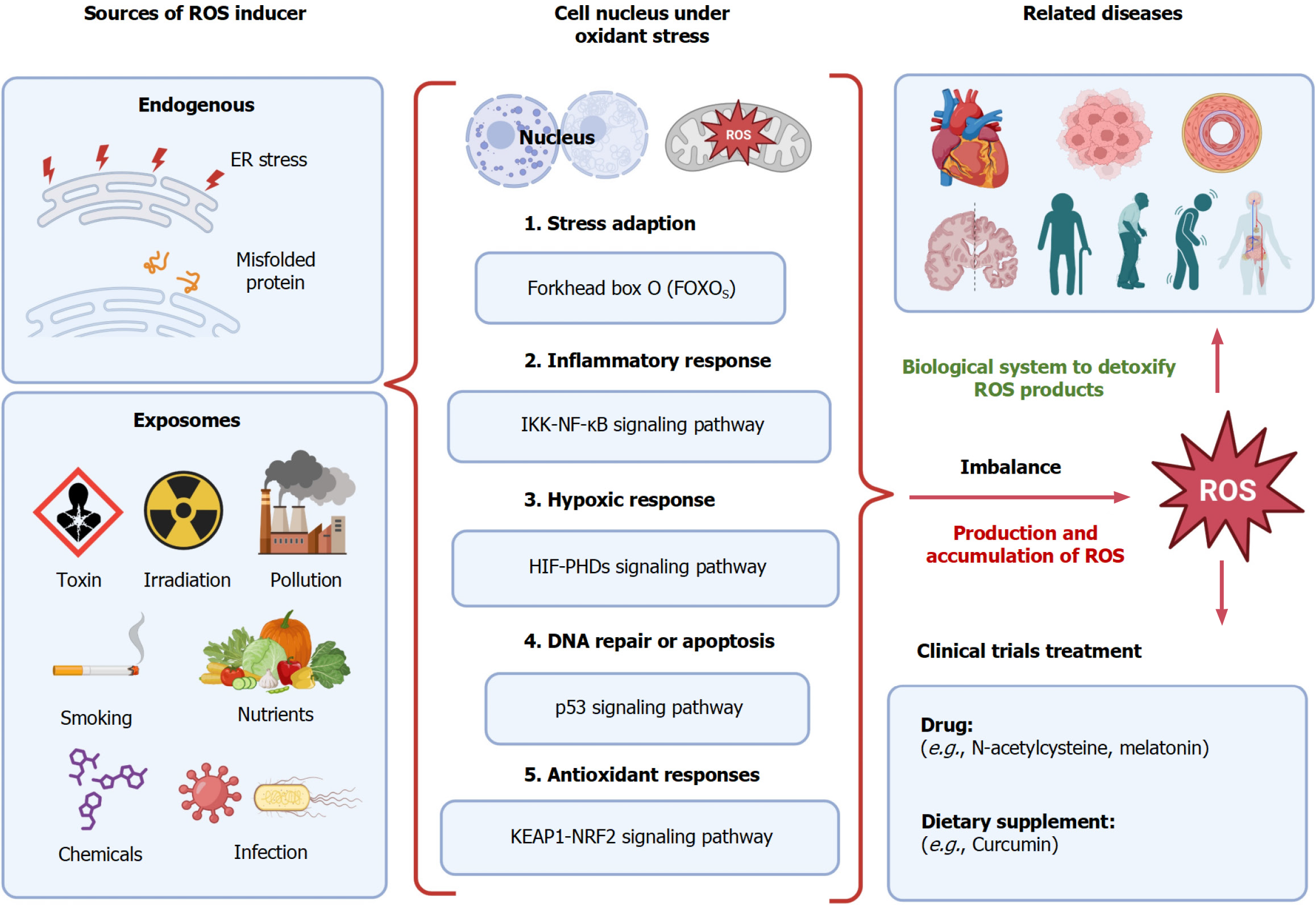Copyright
©The Author(s) 2024.
World J Hepatol. Feb 27, 2024; 16(2): 294-299
Published online Feb 27, 2024. doi: 10.4254/wjh.v16.i2.294
Published online Feb 27, 2024. doi: 10.4254/wjh.v16.i2.294
Figure 1 Diagram illustrating reactive oxygen species including inducers, mechanisms, related diseases, and clinical trial treatments.
Inducers include endogenous and exposomes. The mechanism includes the cell nucleus response to exposure to reactive oxygen species (ROS) and the mitochondrial ROS response. The imbalance between the accumulation of ROS and their clearance by the biological system results in ROS-related diseases such as heart disease, cancer, hypertension, cardiovascular diseases, Alzheimer’s disease, aging, neurodegenerative disease Parkinson’s disease, and metabolic disorder. Current clinical trials mainly focus on the drug and dietary invention. ER stress: Endoplasmic reticulum stress; ROS: Reactive oxygen species; IKK-NF-κB: IκB kinase-nuclear factor-κB; HIF-PDHs: Hypoxia-inducible factor-prolyl hydroxylase domain proteins; p53: Tumor protein p53 or transformation-related protein 53; KEAP1-NRF2: Kelch-like ECH-associated protein 1-nuclear factor E2-related factor 2. All cartoons in this figure were prepared using Biorender (https://biorender.com, accessed on 7 January 2024).
- Citation: Zhang CY, Yang M. Anti-oxidative stress treatment and current clinical trials. World J Hepatol 2024; 16(2): 294-299
- URL: https://www.wjgnet.com/1948-5182/full/v16/i2/294.htm
- DOI: https://dx.doi.org/10.4254/wjh.v16.i2.294









